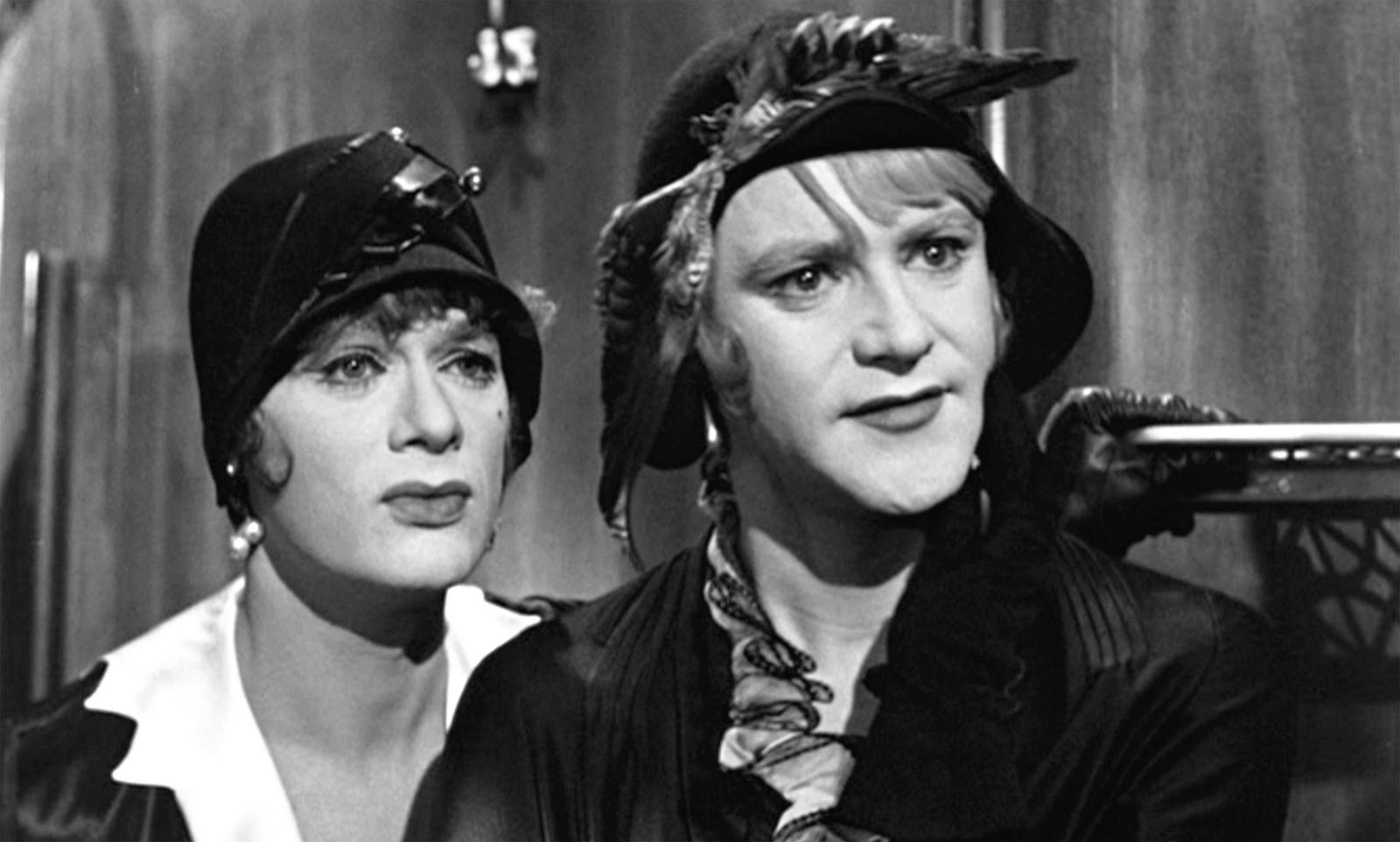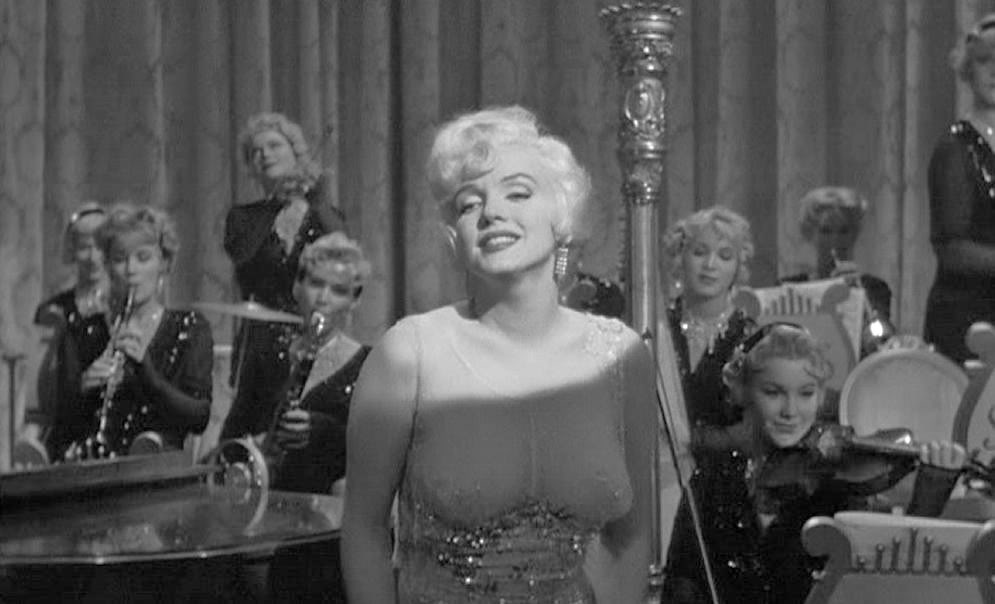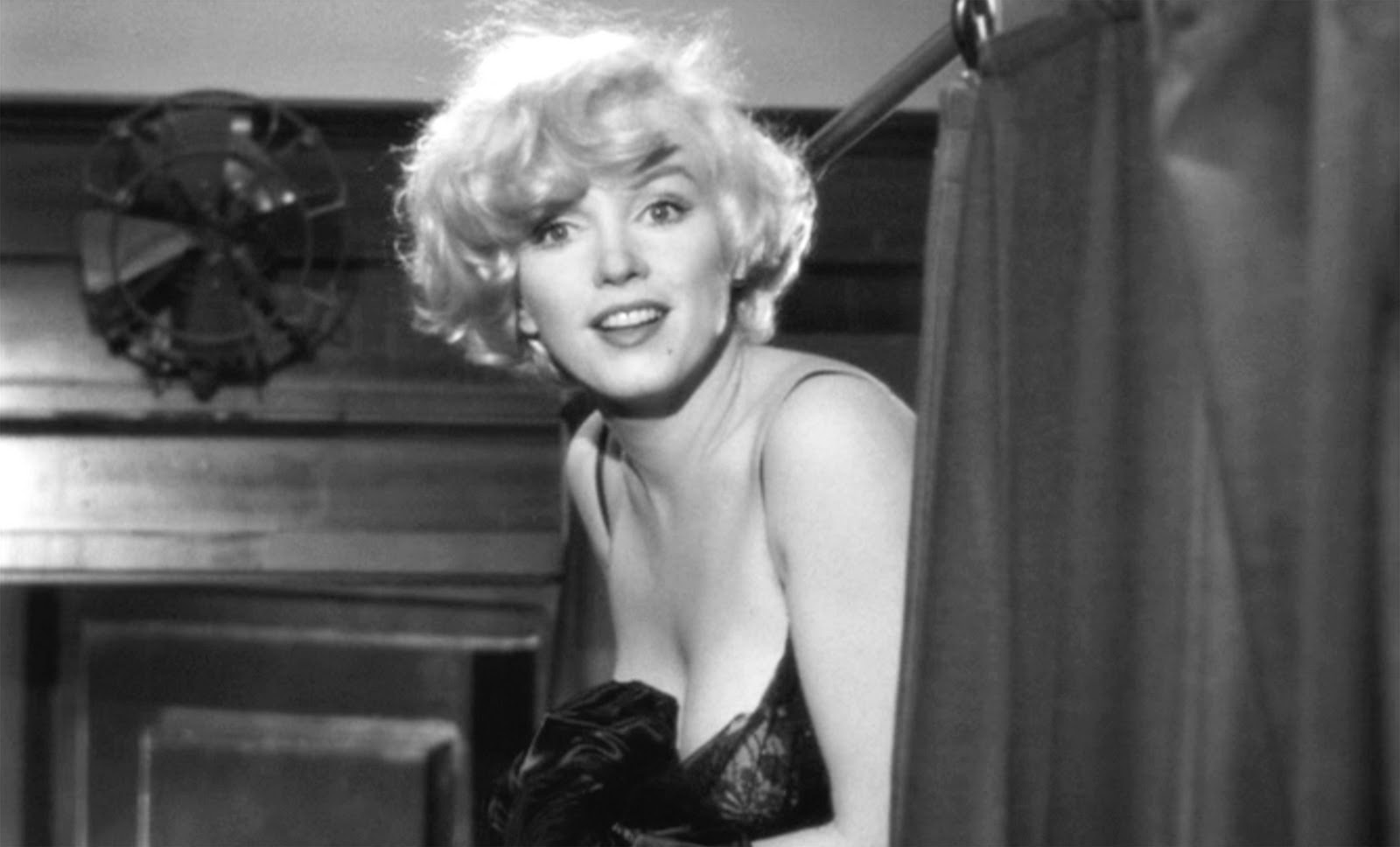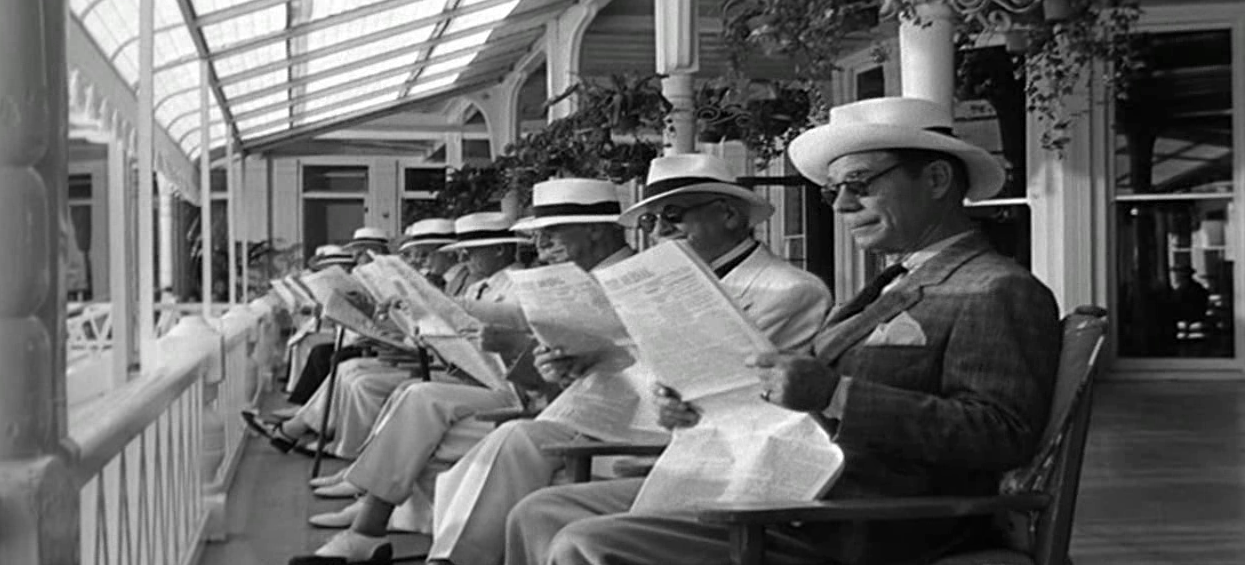How did “Some Like it Hot” challenge gender norms and censorship rules of the era?
Quick Answer: Some Like it Hot ignored regulations of the time and told a raucous story of two men who dress in drag and join a girl’s band to escape the mob. In doing so, they learn about being female and subvert expectations of gender identity in the 1950s.
The Motion Picture Production Code (popularly known as the Hays Code) was officially in place from 1930 until 1968, dictating the moral and ethical content of American films so that moviegoers would not be subject to what it considered degrading material. Despite that later end date, many say the Hays code actually died closer to 1959, following the release of movies like Billy Wilder’s Some Like it Hot, a film made without the code’s approval, effectively raising a middle finger to the organization and stripping the agency of its hold on Hollywood. A gender-bending story of two men dressing in drag to escape the mob, Some Like it Hot is packed full of sexual language and innuendo, was condemned by the Catholic League of Decency for being “seriously offensive to Christian and traditional standards of morality and decency,” was banned outright in Kansas, and, wondrously, received six Academy Award nominations. The film now claims its place in history as one of the greatest comedies of all time, featuring fantastic performances by Jack Lemmon and Tony Curtis, Marilyn Monroe’s last major role, and Wilder’s courageous and hilariously forward take on gender roles.
Some Like it Hot put society to the test and challenged moral complacency. The movie hints at homosexuality, studies the male gaze, speaks to female objectification and misogyny, and condemns male insensitivity. As the two male characters (dressed as women) move in and out of various relationships with members of the same and opposite sexes, they blur gender lines and question whether masculinity and femininity are as opaquely binary as society supposes or whether they are constructs facilitated by mannerisms, attire, and perception.

Tony Curtis and Jack Lemmon
The gender-based comedy of Some Like it Hot goes far beyond chuckles over men wearing women’s clothing. Those gags exist, surely (the screenplay isn’t too haughty for a dick joke here and there), but what makes the script a classic is the way that it ties gender assumptions in knots. From a 2016 retrospective, its subversion of social norms may not be as brazen as it was in 1959, but it’s hard to deny the movie was forward for the era. It was mirrored the mindset of society at large; while censorship was a fixture of 1950s Hollywood, the taboos around the subject were losing their grip as Americans were growing more comfortable with the discussion.
Some Like it Hot finds its jokes through incongruous mixtures of the male and female. Much of the humor comes from juxtaposition: two adult men arguing in deep voices while wearing dresses or the comparison between their mannish physiques and one of the iconic images of female perfection in Ms. Monroe. Monroe’s presence itself sends the message that this is a sexually oriented film, and a character name like “Sugar Cane” sends obvious cues about how viewers are supposed to feel about her.


What a work of art and nature is Marilyn Monroe. - Roger Ebert
The first time we see Lemmon and Curtis dressed as women, the camera gazes at their legs the way it would a real woman. It then shows Sugar from behind, focusing on the way her backside moves. “It’s like jello on springs,” Jerry says. “They must have some sort of a built-in motor.” Even the train releases steam as she walks past, as if no creation on Earth is immune to her. The positioning of her true female form, an icon of perfection in the 1950s, against the “faux-female” form of the men in drag plays with our gaze and creates humor through cinematography.
One progressive idea permeating the film is how dressing as women educates the males about the discriminatory challenges of being a woman. From day one, they are frustrated by the endless sexual advances they receive from men. “I’m not even pretty,” Jerry (Jack Lemmon) says to Joe. “They don’t care—just as long as you wear skirts. It’s like waving a red flag in front of a bull,” Joe replies. Upon arriving at a hotel, the men are eyed up by the gaze of every rich old fellow lounging on the patio, and Jerry quickly gets his butt pinched by a zealous old millionaire in an elevator. “Now you know how the other half lives,” Joe says. In this way, their cross-dressing provides the two males the opportunity to become more sensitive toward and understanding of women. Still, that lesson, along with much of the film’s humor and legitimacy, only works under the conception of a two-gender system. In today’s landscape of acknowledging a spectrum of sexualities and genders, including transgender and gender nonconforming individuals, the film’s foundation cracks. But this is to be expected from a piece of art that was challenging the gender assumptions of 1959.

The millionaires of Some Like it Hot
The film looks at the two men’s experiences as women in different ways. Tony Curtis’ Joe transforms into Josephine, a female variant of his same name, as if to suggest he is forever capable of managing control over his female persona. Lemmon’s Jerry, however, refuses Joe’s suggestion that he go by Geraldine and instead adopts the name Daphne, creating an immediate distance between himself and the woman he becomes. This is furthered when he later breaks the role to play another new character—this time a wealthy male heir to Shell Oil, a ruse designed to seduce Sugar. Jerry gets so consumed by the personality of Daphne that after a hilarious night of tango with wealthy Osgood (Joe E. Brown), she accepts a marriage proposal from the millionaire and wildly plans the honeymoon. It takes a diatribe from Joe to remind Jerry he is actually (or biologically) a man:
JERRY
(brimming over)
Osgood proposed to me. We’re planning a June wedding.
JOE
What are you talking about? You can’t marry Osgood.
JERRY
(getting up)
You think he’s too old for me?
JOE
Jerry! You can’t be serious!
JERRY
Why not? He keeps marrying girls all the time!
JOE
But you’re not a girl. You’re a guy! And why would a guy want to marry a guy?
JERRY
Security.
JOE
Jerry, you’d better lie down. You’re not doing well.
JERRY
Look, stop treating me like a child. I’m not stupid. I know there’s a problem.
JOE
I’ll say there is!
JERRY
His mother—we need her approval. But I’m not worried—because I don’t smoke.
JOE
Jerry—there’s another problem.
JERRY
Like what?
JOE
Like what are you going to do on your honeymoon?
JERRY
We’ve been discussing that. He wants to go to the Riviera—but I kind of lean toward Niagara Falls.
JOE
You’re out of your mind! How can you get away with this?
JERRY
I don’t expect it to last, Joe. I’ll tell him the truth when the time comes.
JOE
Like when?
JERRY
Like right after the ceremony.
JOE
Oh.
JERRY
Then we’ll get a quick annulment—he’ll make a nice settlement on me—I’ll have those alimony checks every month—
JOE
Jerry, listen to me—there are laws—conventions—it’s just not being done!
This conversation at least pretends to attempt to re-establish the heteronormative status quo expected by a major Hollywood picture in 1959 (“Why would a guy want to marry a guy?”), but Some Like it Hot’s final lines refuse this task, flipping that expectation on its head with openly homosexual implications:
OSGOOD
I called Mama—she was so happy she cried—she wants you to have her wedding gown—it’s white lace.
JERRY
(steeling himself)
Osgood—I can’t get married in your mother’s dress. She and I—we’ not built the same way.
OSGOOD
We can have it altered.
JERRY
(firmly)
Oh, no you don’t! Look, Osgood—I’m going to level with you. We can’t get married at all.
OSGOOD
Why not?
JERRY
Well, to begin with, I’m not a natural blonde.
OSGOOD
(tolerantly)
It doesn’t matter.
JERRY
And I smoke. I smoke all the time.
OSGOOD
I don’t care.
JERRY
I have a terrible past. For three years now, I’ve been living with a saxophone player.
OSGOOD
I forgive you.
JERRY
(with growing desperation)
And I can never have children.
OSGOOD
We can adopt some.
JERRY
But you don’t understand! (he rips off his wig; in a male voice)
I’m a MAN!
OSGOOD
(oblivious)
Well—nobody’s perfect.
Osgood is so enamored with Daphne that he doesn’t care (or even notice) that she’s a man. The script went on to include an extra few lines of text: “Jerry looks at Osgood, who is grinning from ear to ear, claps his hand to his forehead. How is he going to get himself out of this? But that’s another story—and we’re not quite sure the public is ready for it.”
While that may have been true, Wilder’s film proved the public was ready for more than the Hays Code had been allowing. Some Like it Hot became a critical and financial success and an icon of cinema, now regularly revered as the director’s best comedy and Monroe’s finest performance.

